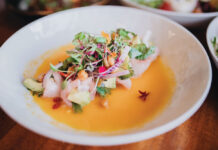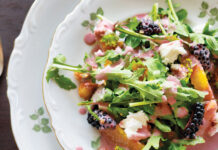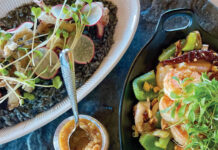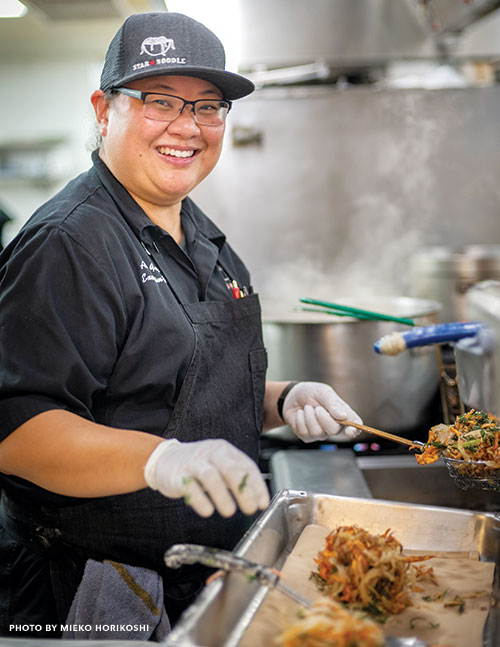
For Tanya, the heavy lifting of stepping into a managerial role was more about perception. “A personal challenge that I recently learned to overcome was knowing that it’s okay to make mistakes, as long as I learn from it and don’t repeat it. I’ve learned to succeed through failure.”
When I share the first time I created a new dish for a restaurant, and how I felt elevated in my profession, Kau responds with a similar memory. “A couple of years ago, I got to create my first dish, grilled tako on pohole fern salad, for Noble Chef [an annual fundraiser for UH–Maui College Culinary Arts Program]. It was one of the first events I got to manage from beginning to end: from brainstorming, researching and developing the dish; to prepping, cooking and serving. I recognize it as the dish that brought me more clarity in my career path.” She explains that, at the start of her career, she spent a lot of time executing recipes that other chefs felt cultural or personal connections with. “In the last couple of years, I’ve been figuring out where I want my food to take the people I serve. To find a balance between heritage and hospitality, and share it through my food, is a big part of my story.”
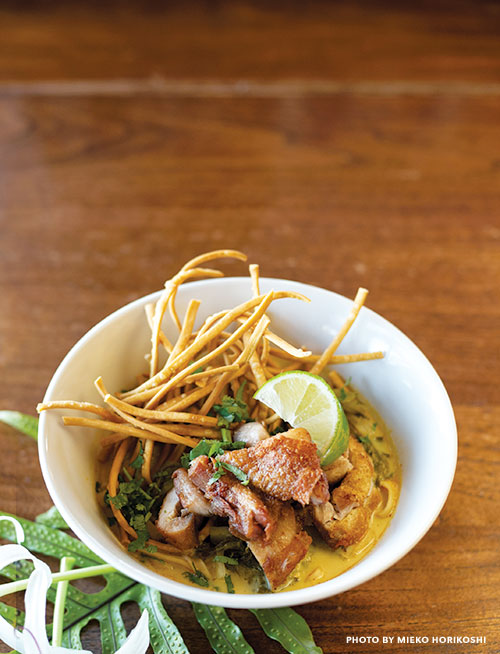
I ask Abby and Tanya whether they, too, can pinpoint a dish that helped them rise to the next level. Tanya says hers was a whole meal, which she created for The Ritz-Carlton’s Banyan Tree restaurant during 2018’s Celebration of the Arts with the blessings of her mentor, Chef Alvin Savella—that year’s ‘Aipono Chef of the Year. “Chef handed me the reins, and I came up with a three-course dinner special for that week. I curated a menu using kalo [taro] from roots to shoots.”
“I love the combination of coconut milk, chiles, patis, and calamansi juice tossed with seafood that’s lightly ‘cooked’ in vinegar,” says Abby. “Showcasing my version of kinilaw, a Filipino-style ceviche, for an event menu was important to me; the dish represented my culture and the food I identify with.” She adds, “I want to continue to grow and refine my style of cooking. But maintaining balance between work and my personal life is just as important. I love traveling to new places and exploring different cuisines. And, of course, learning is a priority.”


